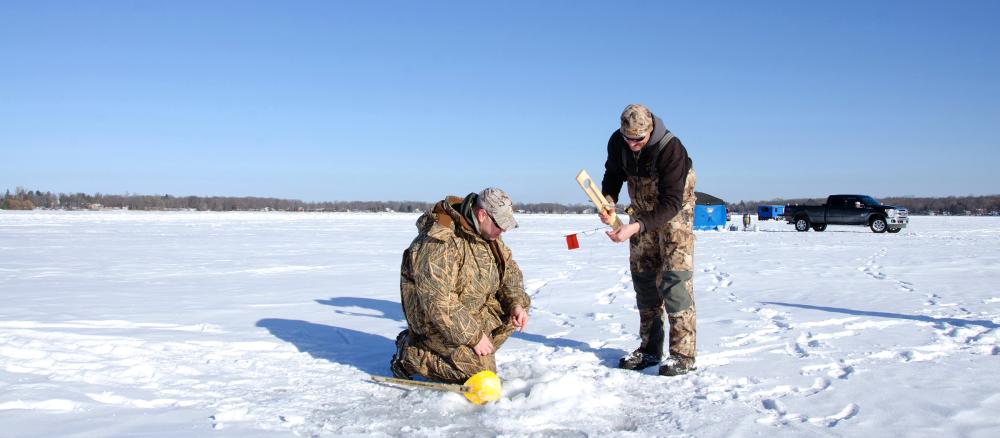From shorter winter ice seasons to shifting fish populations, climate change is transforming Minnesota lakes as we know them.
These changes are becoming more and more noticeable, particularly for Minnesotans that enjoy winter sports like ice fishing or pond skating. Over the last 50 years, lakes across the state have lost an average of 10-14 days of ice coverage. The stories below highlight the impact of climate change on our lakes — and our way of life as Minnesotans.
Medicine Lake
Medicine Lake in Plymouth is a popular destination for Twin Cities ice anglers and outdoor enthusiasts looking to enjoy sports like kick-sledding and snowshoeing on lake ice. Over the last 50 years, Medicine Lake has lost roughly 12 days of winter ice coverage.
For Nick Sacco, a recreation program specialist with the Three Rivers Park District, the shifting winter conditions require flexibility in case there is not enough ice or snow coverage for winter activities on Medicine Lake and others in the district. “We are absolutely adjusting our programming to meet the un-predictableness of our winters,” said Sacco. “Twenty or thirty years ago, I don’t think outdoor educators and recreation guides always had to make back-up plans. We just had winter. That has changed greatly, especially over the past 10 years.”
Lake Washington
For locals of the Mankato region, Lake Washington is the perfect place to catch crappies, bass, northern pike, and walleye. It’s also a popular residential lake, with about 450 homes, 80 percent of which are occupied by full-time residents. Over the last 50 years, Lake Washington has lost nearly 14 days of winter ice coverage.
Homeowner Jim Folden has lived on Lake Washington for nearly 15 years and has long-standing family ties to the lake. “My mother-in-law had a place on the lake too, just across the bay from us. We’ve been coming out here for a long time. When we would go visit her at Christmas, we almost always could shovel out a skating rink in front of her place,” said Folden. “The last 10 years or so, we’re fortunate to have ice at Christmas that’s trustworthy. I’ve got grandkids now, and we try to do the same thing, but you can’t count on the ice like you used to be able to.”
Siseebakwet (Sugar) Lake
Siseebakwet Lake, just southwest of Grand Rapids, has seen its ice cover season shorten by nearly two weeks over the last 50 years, but the lake's depth, a robust walleye stocking program, and exceptional water quality have made it more resilient to climate change than other area lakes. According to DNR Fisheries Supervisor Dave Weitzel, our changing climate has made Siseebakwet Lake more uniquely resilient than shallower area lakes that are suffering more drastic impacts of climate change. Shallower lakes warm faster, which can accelerate weed and algae growth, decrease water quality and oxygen, and put more stress on aquatic food chains. This combination makes it harder for cold water fish species to survive.
Shorter ice seasons also increase the intensity of ice fishing, which Weitzel says, “has put pressures on fish populations that we could never have anticipated even 10 years ago.”
